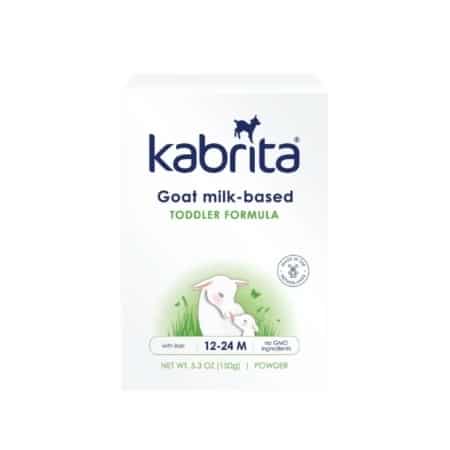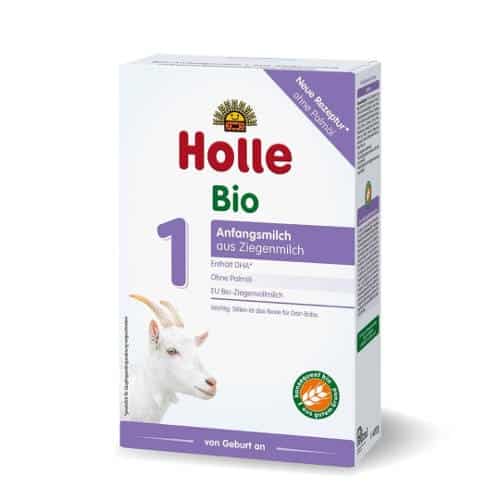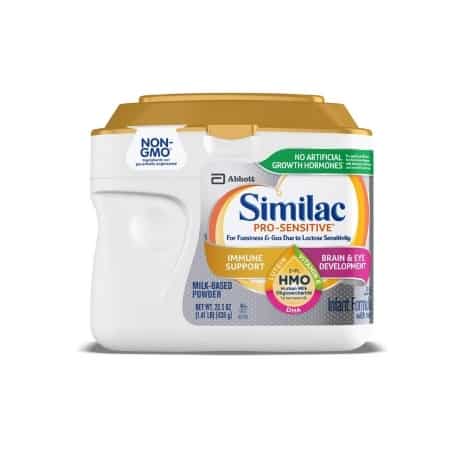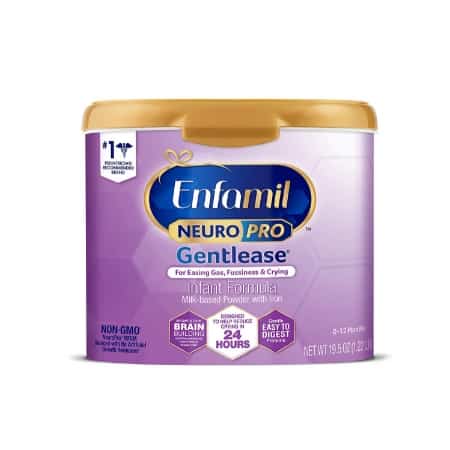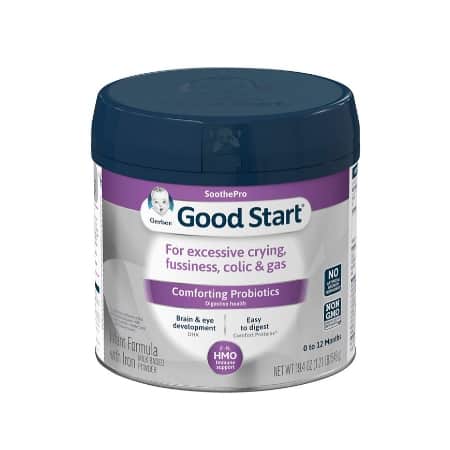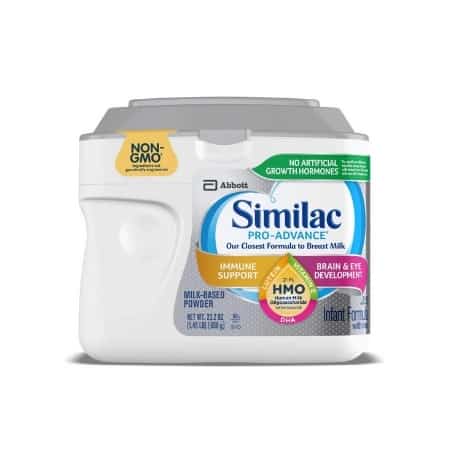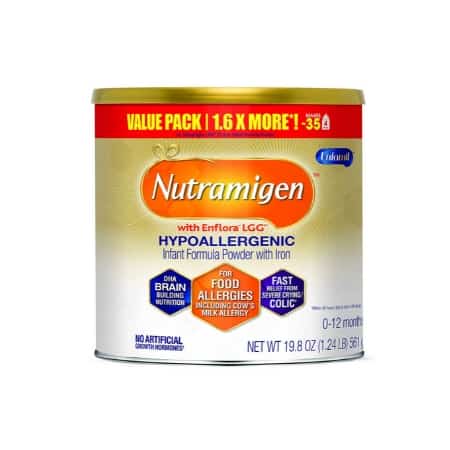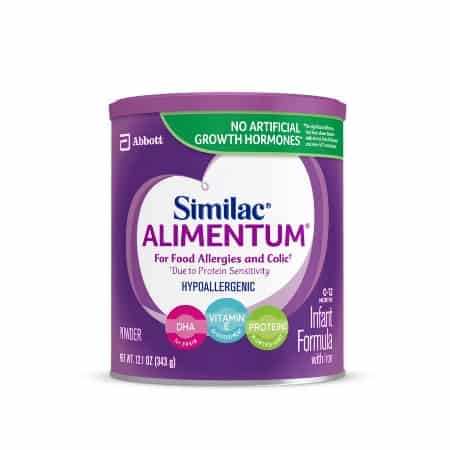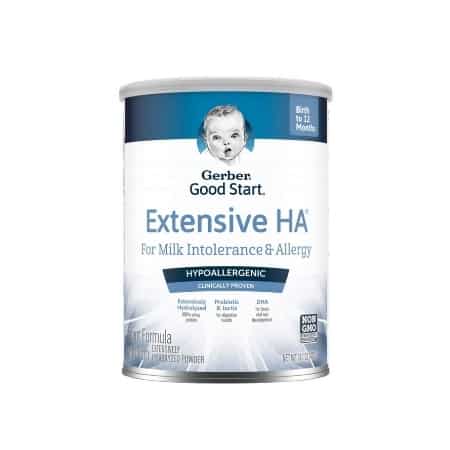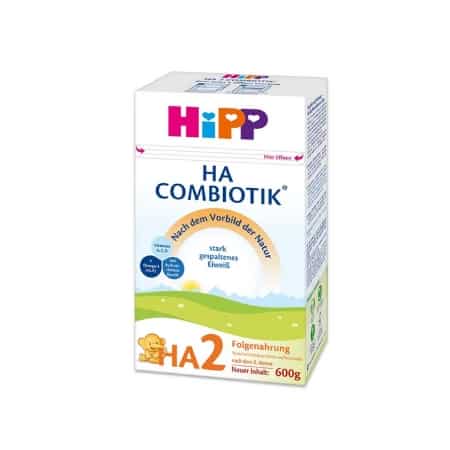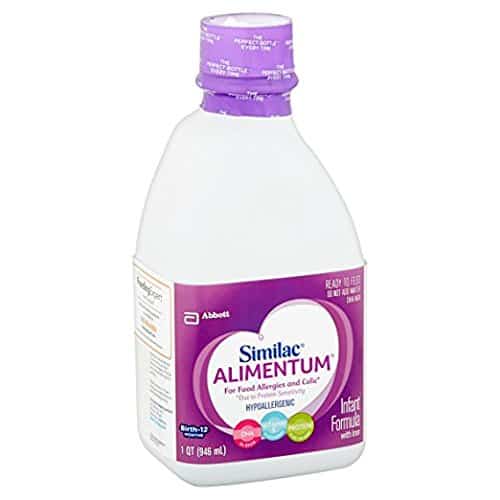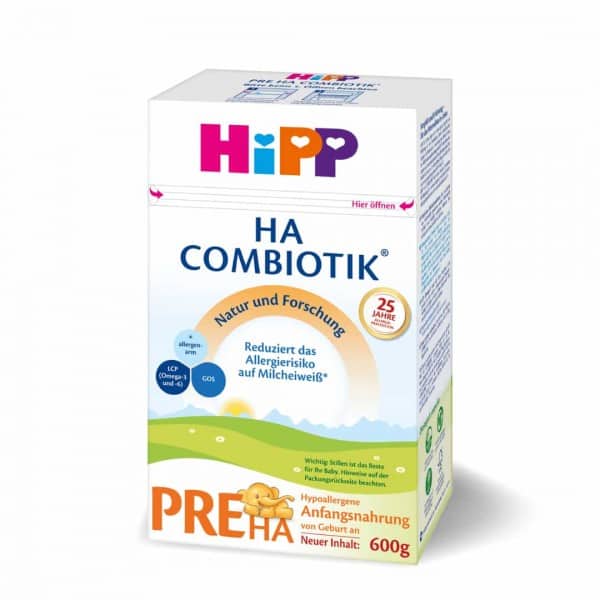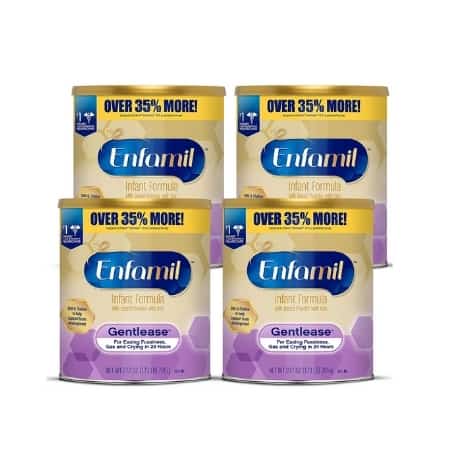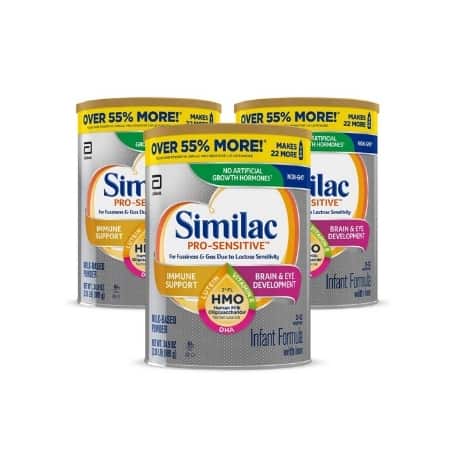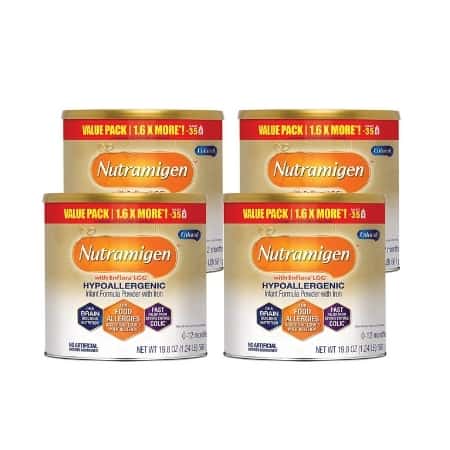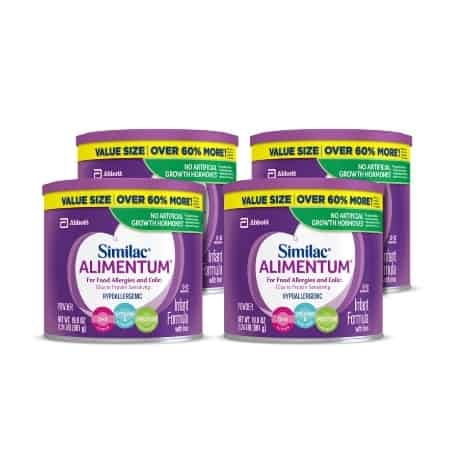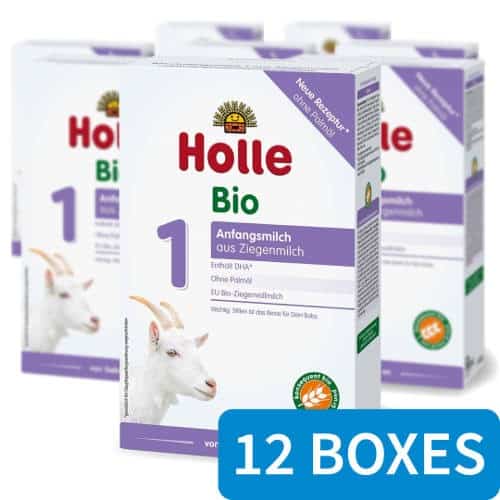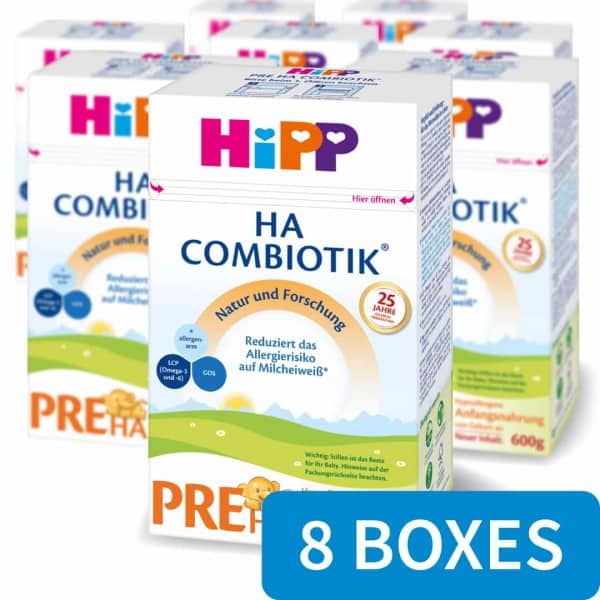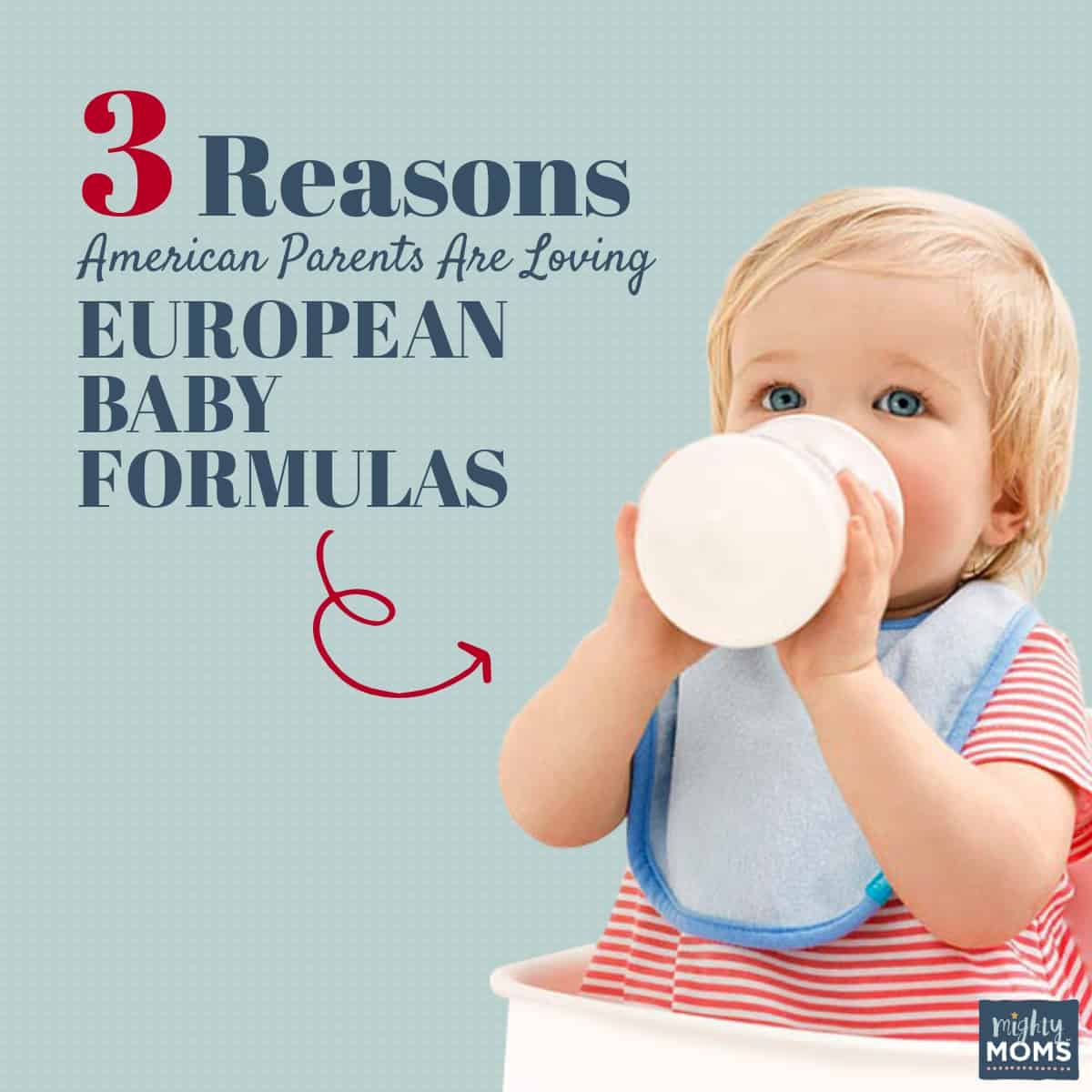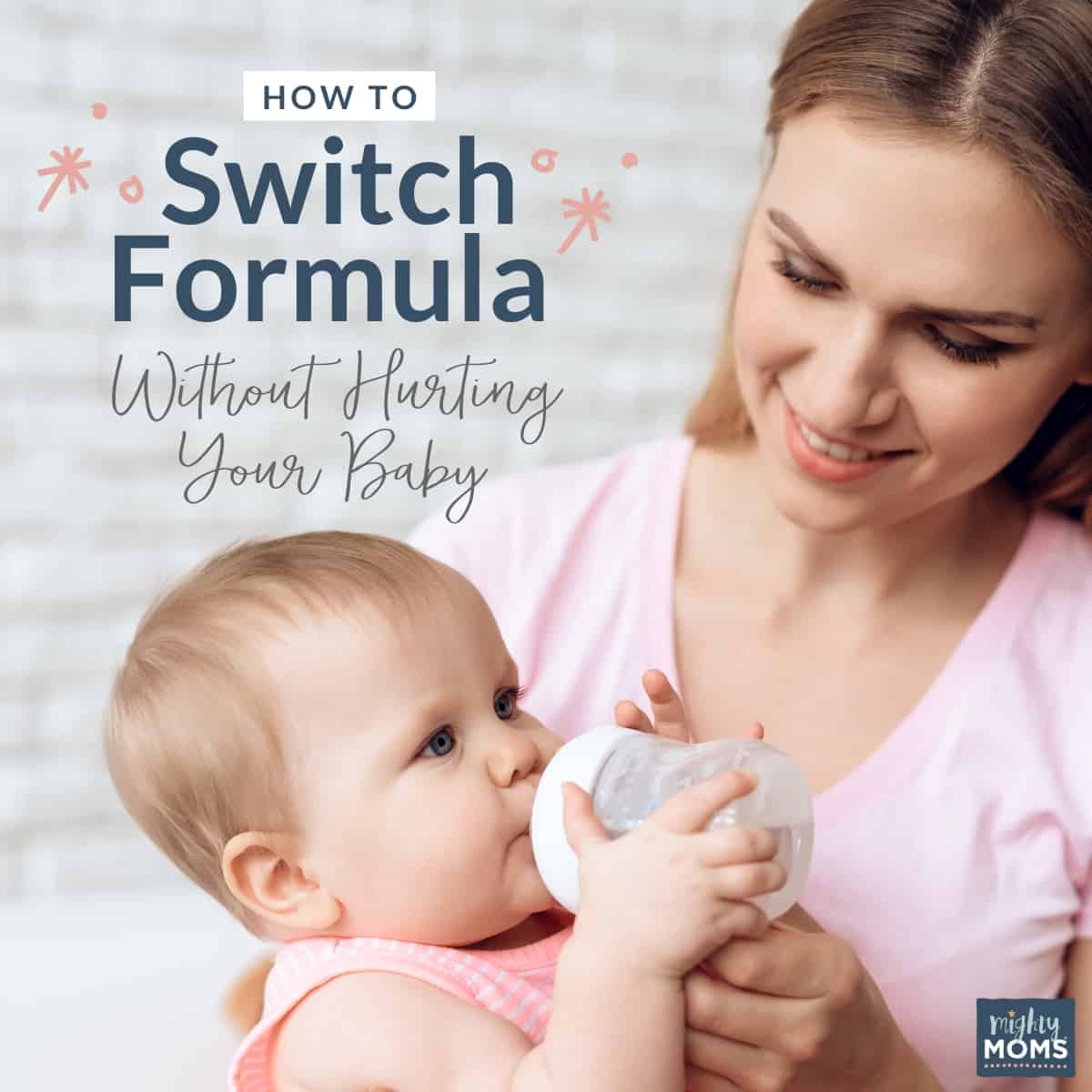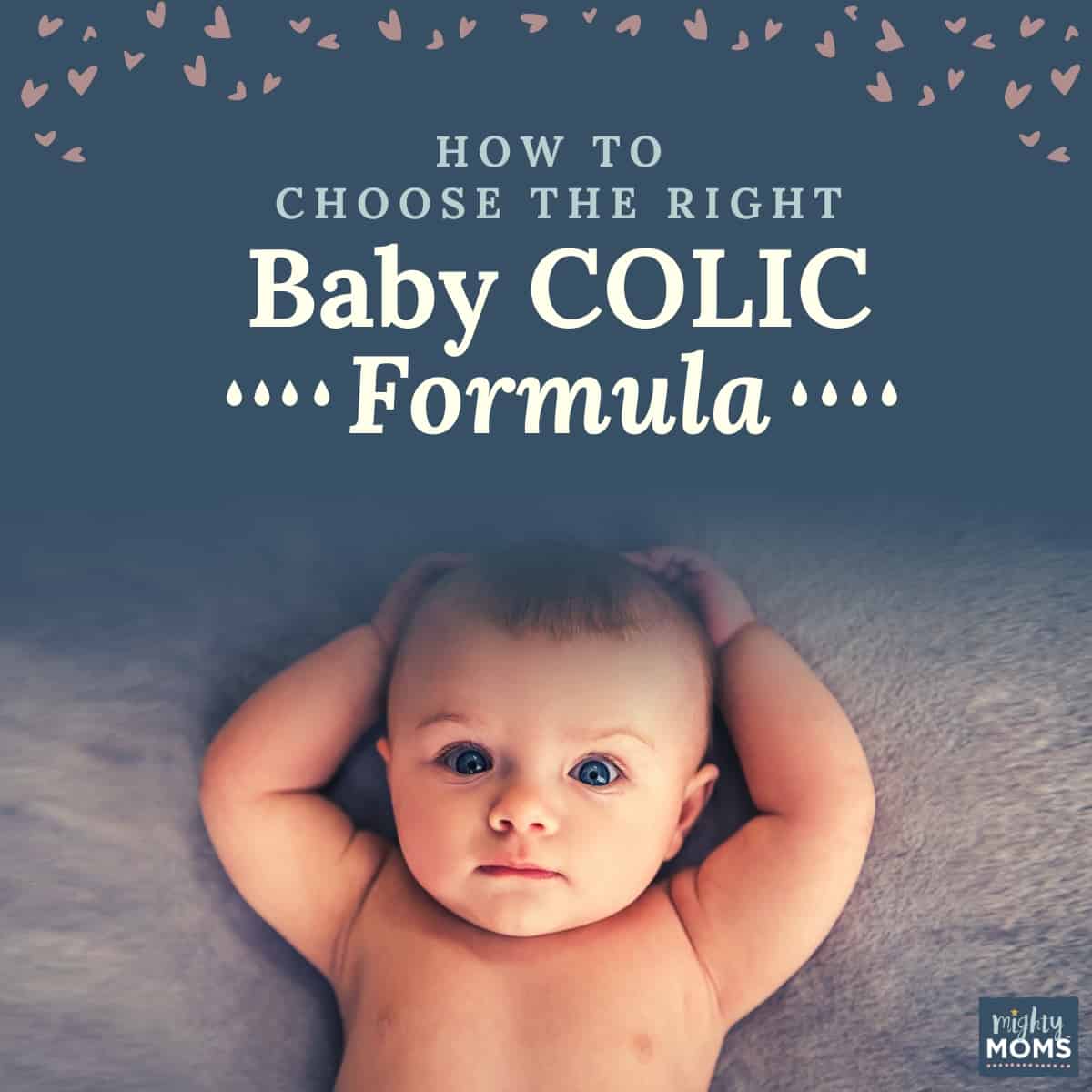In This Article...
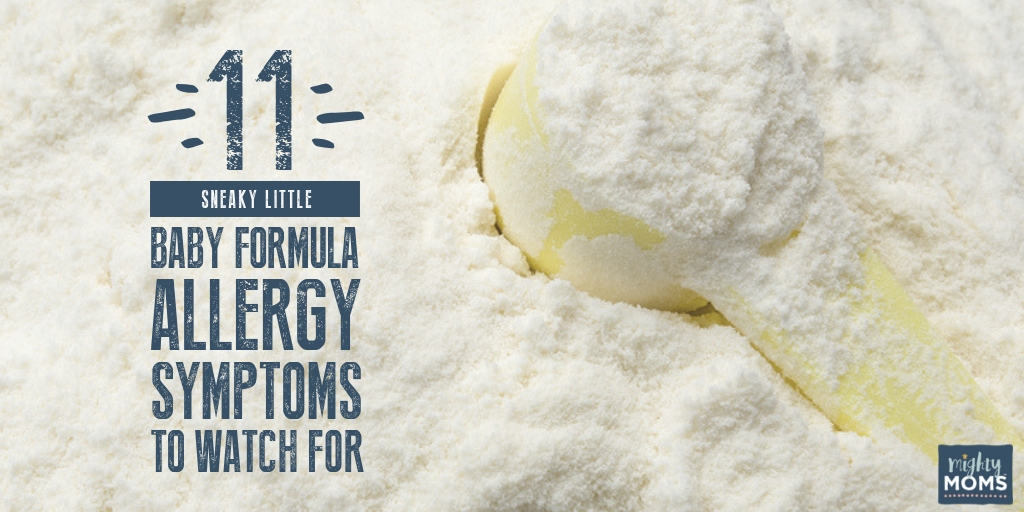
Have you every wondered if the reason your baby was SO CRANKY was because of baby formula allergy symptoms?
Be honest, it would be nice to have a cause behind all the crankiness. What if his fussiness could be fixed with a simple formula switch?
Let’s see if that’s the answer you’ve been praying for.
Are Your Baby Allergy Symptoms Mild? Or Severe?
Like most things, there’s a wide spectrum of symptoms and reactions when it comes to a formula allergy.
On one hand, it could be very minor, showing up in the form of a gassy tummy, or rash from formula that looks a whole lot like eczema behind the knees or elbows.
In more severe formula allergy cases, your child could struggle with colic or have uncontrollable diarrhea.
Below are 11 ways to tell if your baby is allergic to formula, split into two categories of mild and severe cases.
5 Symptoms of a Mild Formula Allergy
- Dry, itchy, flaky patches of skin rash from formula (eczema)
- Hives (red blotchy spots)
- Swollen lips or mouth (call 911 if you see troubled breathing)
- A red ring around the anus that doesn’t seem to respond to diaper rash remedies
- Straining to pass gas, very fussy and irritable after eating.
These allergy symptoms may be greatly helped by switching to a sensitive baby formula. Talk with your doctor about the sensitive baby formulas later in this article
6 Symptoms of a More Severe Formula Allergy
- Uncontrollable crying (for hours)
- Severe diarrhea (average of 2-4 times a day – call your doctor to prevent dehydration, which is extremely dangerous!)
- bloody stools
- a failure to thrive, not gaining weight (should double birth weight by 6 months)
- excessive spitting up and difficulty swallowing (you should also consider these formulas designed for acid reflux)
- wheezing (with ear to chest, can hear a rattling sound when breathing – if you hear this, call your doctor right away.)
If your child seems to suffer from any of the symptoms listed above, you will want to talk to your doctor about switching to a hypoallergenic formula. I’ve listed several below so you can see what those look like.
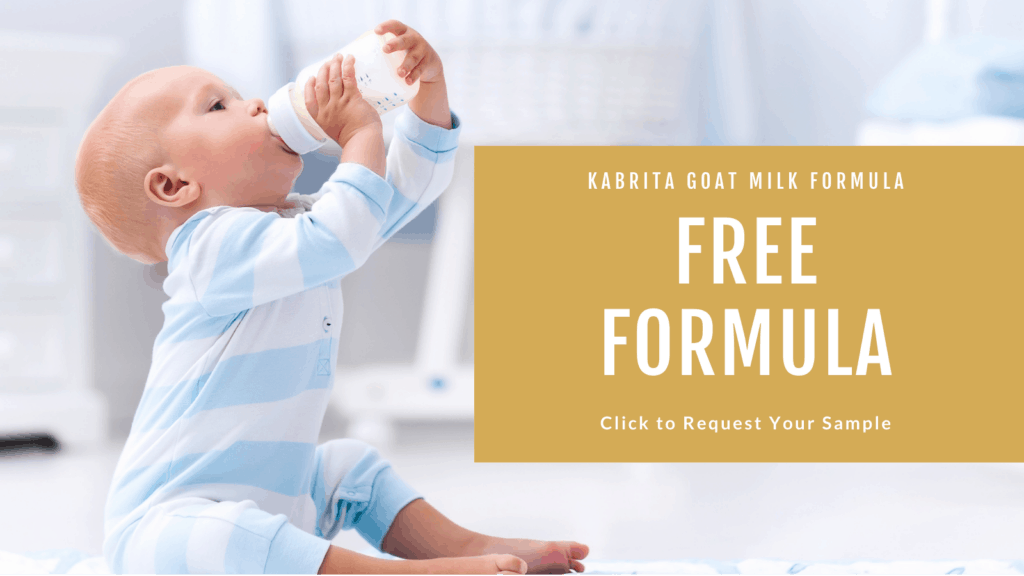
Best Baby Formulas for Mild Allergies
If your baby checked off all the boxes of the mild formula allergy symptoms, here are the top formulas to talk over with your doctor. These may be the answer you’re looking for!
Free Sample of Goat Milk Formula
My favorite solution for a milk sensitivity (or allergy) is to avoid the main culprit, cow’s milk, and try something with a totally different structure: a formula based on goat’s milk.
Goat’s milk been shown to be easier on tiny tummies to digest, being more like breastmilk in that arena. And although I don’t recommend giving your baby straight up goat’s milk (the protein component can be hard on tiny kidneys), a formula based on goat’s milk is a smart place to start.
You can only get it by ordering directly from their website. Click here to get a free sample of Kabrita’s goat’s milk formula and try before you buy!
You may notice Kabrita says “Toddler Formula”. This is a labeling thing with the FDA. This formula is recommended for babies over 6 months who have started eating solid foods.
Organic Goat Milk Formula
If you are looking for an organic goat milk formula, look no further than Holle Goat Milk Formula.
Holle is a European formula brand only available through reputable companies overseas like OBF24. To learn more about what makes European baby formulas so special, be sure to read this article, which breaks down all the details.
Similac Pro Sensitive
Similac Pro Sensitive is also similar to the Similac standard formula, Advance. The only difference is that this formula breaks those proteins down a little to help keep small tummies from overworking. It is currently the only baby formula on that market that has HMO’s, a very special protein found in breastmilk to boost immunity. You can learn more about this revolutionary ingredient in this article here.
Enfamil Gentlease
Enfamil Gentlease is a specially formulated…um…formula is based on cow’s milk, but the proteins are already partially broken down, making it easier for your baby to digest without getting all gassy and uncomfortable. It has only 20% of the usual amount of lactose.
Good Start Soothe
Good Start Soothe uses the probiotic L. Reuteri. In studies, this particular probiotic was shown to reduce crying time by 50% in colicky babies.
As if that probiotic wasn’t enough to leave you flirting and batting your eye-lashes, it also uses a special carbohydrate blend to ease fussiness and gas, that’s only 30% lactose. it’s made with 100% whey, it slips through the digestive system a lot easier than many other regular formulas.

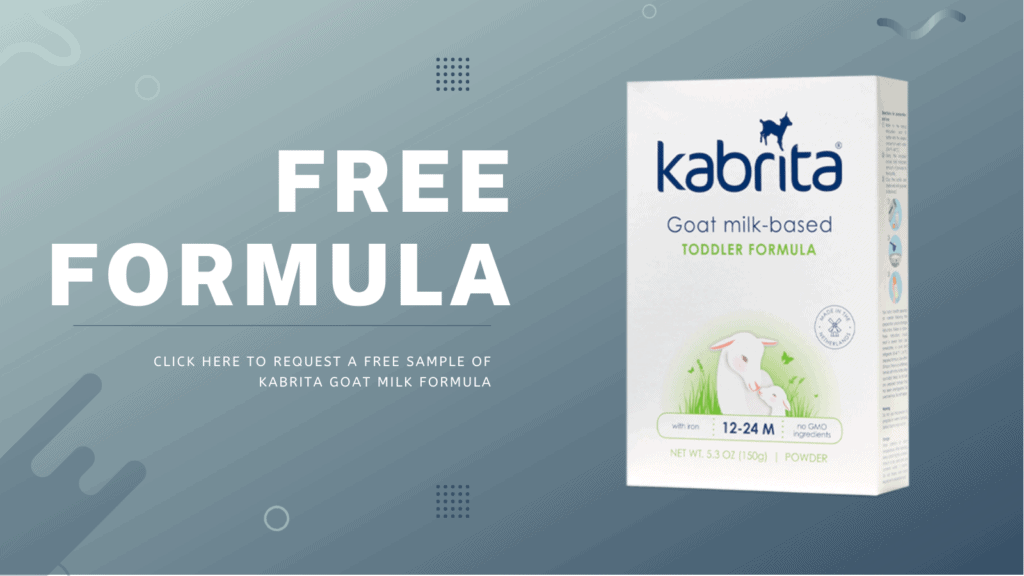
Best Baby Formulas for Severe Allergies
There are two kinds of hypoallergenic formulas: hypoallergenic formula and hyper-hypoallergenic formulas. You can learn more about that distinction here.
In this article, I’m going to just highlight the basic hypoallergenics. They are more commonly used, and less expensive than the hyper-hypo types.
Nutramigen with Enflora LGG
Nutramigen is in the Enfamil family of formulas. It’s based on dairy milk, but the particles are so teeny tiny that the body ignores them. (It’s lactose-free.) Enfamil likes to brag that it can bring colic symptoms under control under 48 hours.
The “Enflora LGG” refers to a probiotic that will help keep the lining of the intestines healthy. It has also been shown to promote skin health in infants who struggle with allergic rashes and eczema. You can use it for newborns all the way through 18 months.
Alimentium Expert Care
Alimentum Expert Care is made by Similac. The dairy-protein particles are so teeny-tiny that most babies ignore them, which is why it’s so effective with allergy-suffering babies. Infants who struggle with colic or have severe skin rashes due to a protein sensitivity may find final relief with this allergy.
Extensive HA
Extensive HA is the Gerber branded hypoallergenic formula. Babies with cow’s milk protein allergy have been shown to have decreased levels of bifidobacteria in their gut, so this formula also includes the probiotic L. Reuteri, to help settle upset tiny tummies.
HiPP HA Combotik
HiPP HA Combotik is the only organic hypoallergenic on the market. It is a European formula, but don’t let the German scare you. I’ve got a translations sheet for you in this article.

Money a Little Tight? Try Buying Formula for Allergies in Bulk
If you know you’re going to be using the same formula for a few months, you can save a lot by purchasing in bulk. Here are a few formulas available for bulk purchase.

Is it a Formula Allergy? Or Lactose Intolerance?
When it comes to a baby formula allergy, most parents jump to the assumption that their baby is lactose intolerant.
WRONG!
It’s very rare for a baby to be lactose intolerant. Lactose intolerance is not the same as a milk allergy.
A milk allergy is an immune response. The body thinks it sees an “invader” and attacks it.
In lactose intolerance, the body simply cannot absorb the sugar, and so rejects it. (It’s a subtle, yet important, distinction.)
There are only a handful of conditions that would set up a baby to be lactose intolerant.
- The infant was born prematurely and hasn’t yet developed the lactase enzyme he needs (but will given enough time).
- One or both of the parents are lactose intolerant. (It’s a genetic condition.)
- The baby had severe diarrhea, which lowered her body’s ability to make lactase for a week or two.
- The infant is on certain medications (talk to your pediatrician).
- The baby was diagnosed with a digestive disorder like celiac disease or Crohn’s disease. (Do those run in the family? Talk to your doctor.)
This 2016 study found up to 7 percent of all babies can struggle with a formula allergy, so it’s a good idea to be aware of what you’re looking for.
This way you’re not switching to a more expensive baby formula for no reason!
How to Know if Your Baby Needs Soy Formula
The issue of soy formula is a little more involved than just “my baby has an allergy, better switch to soy”.
There are several things you have to consider when switching away from a milk-based formula, including some recent research you’ll want to be aware of. I’ve detailed all of that in this article on soy formula. Check it out to get your questions answered!
The Proof is in the Pudding Lack of Crying
Hopefully, you’ve got a game plan now. You’ve gone through the list of baby formula allergy symptoms and have a formula to start testing out.
What’s next?
Firstly, if you think your baby needs a hypoallergenic formula go ahead and call to your pediatrician. She’ll want to do a physical exam and perhaps even send a stool sample out to the lab.
If you’re in the first camp, pick out the sensitive baby formula you want to start with and begin to transition your baby slowly over to the new formula.
- First Day: 75% old formula, 25% new formula
- Second Day: 50% old formula, 50% new formula
- Third Day: 75% new formula, 25% old formula
- Fourth Day: 100% new formula
Going slow can help prevent extra gas bubbles and give your baby’s digestive system a chance to adjust. Once you’ve moved over 100% to the new formula, go through the baby formula allergy symptoms listed above again. Are they improving? If so, happy dance! If not, give your doctor another call and perhaps start treating each symptom (like eczema) separately.
The important thing is to keep moving! Keep working to find answers. You will find them eventually! (That’s the good thing about time. It’s a great healer!)
I Love Citations
Cow’s Milk Protein Allergy. GIKids.org
Incidence of Cow’s Milk Protein Allergy. BJGP.org (medical journal)
Lactose Intolerance. GIKids.org
Atopic Dermatitis (Eczema). MayClinic.org
Ausnutria Hyproca Study Says Goat Milk Infant Formula Digestion Closer to Human Milk. DairyReporter.com
We ♥ honesty! This post contains affiliate links that provide extra money for our mutual coffee habits addictions. Click here to learn more. As an Amazon Associate I earn from qualifying purchases.
